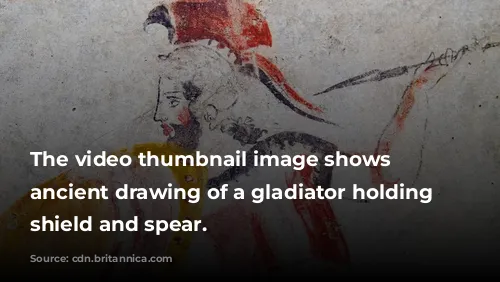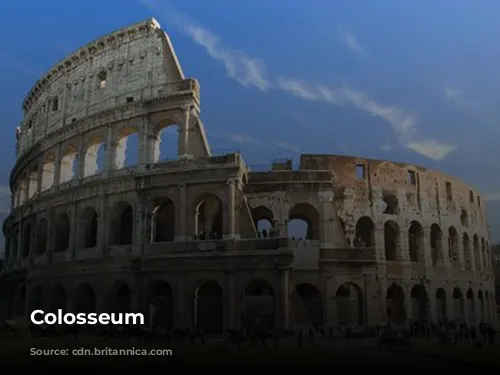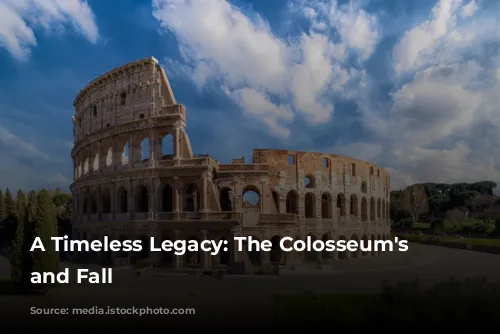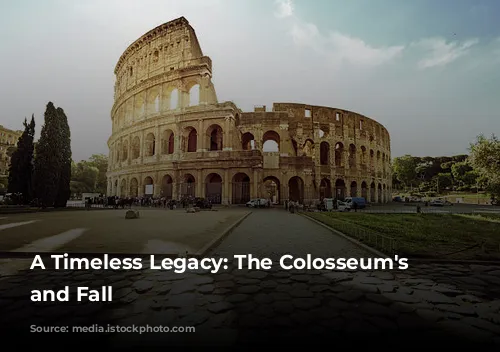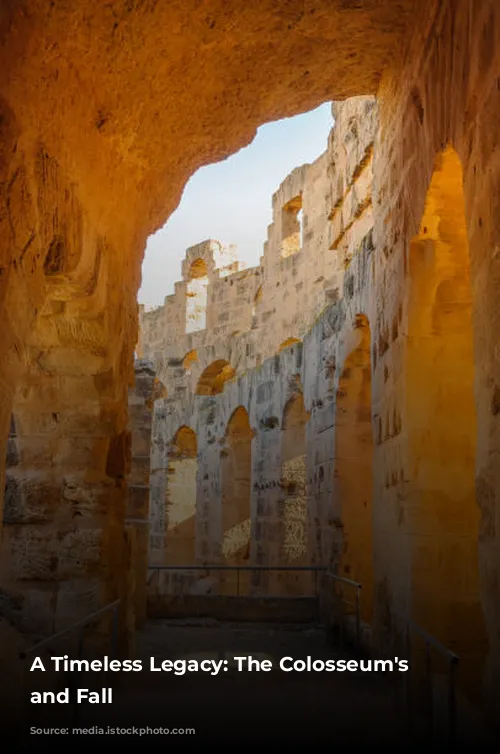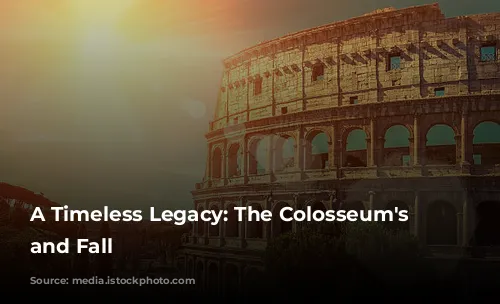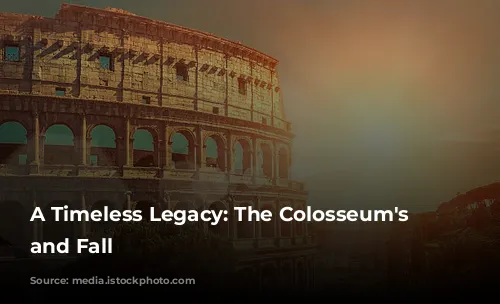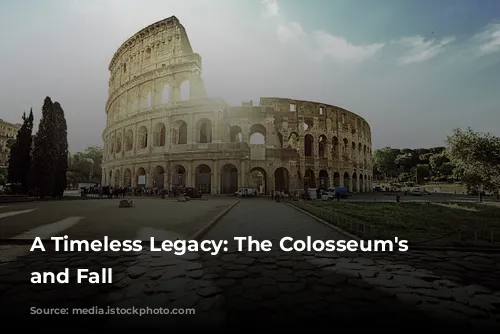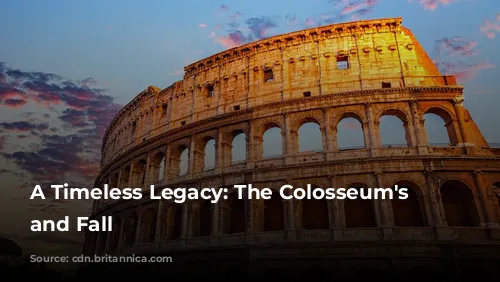The Colosseum, a majestic structure standing tall in the heart of Rome, whispers tales of a glorious past. As one of the few remaining intact remnants of the Roman Empire, it stands today as a testament to the remarkable architectural and engineering skills of the ancients. But beyond its historical significance, the Colosseum is a major contributor to the Italian economy, attracting hordes of tourists from across the globe. In 2018 alone, the Colosseum, along with the Roman Forum and Palatine Hill, generated over $63.3 million (€53.8 million), making it the most lucrative tourist attraction in Italy.
The Colosseum, however, has not always been the shining beacon of Rome it is today. After the decline of the Western Roman Empire, the Colosseum faced a period of severe neglect, falling into a state of disrepair. In the 12th century, powerful families like the Frangipane and Annibaldi saw the Colosseum as a strategic fortress, using it as their base of operations. The 15th century saw a further decline, as Pope Alexander VI permitted the use of the Colosseum as a quarry, with its materials being plundered for other construction projects. This unfortunate period lasted over a thousand years, with the Colosseum left to decay. Thankfully, the 1990s saw a long-awaited revival, with state-funded restoration efforts breathing life back into the ancient amphitheater.
From Blood and Spectacle to a Symbol of Resilience
The Colosseum was conceived as a testament to the power and grandeur of the Roman Empire, its construction initiated during the tumultuous reign of Vespasian, a period known as the Year of the Four Emperors. This impressive structure was not just a symbol of might, but also a source of entertainment for the masses. Emperor Vespasian, driven by a desire to revitalize Rome, envisioned the Colosseum as a venue for gladiatorial combats, animal hunts, and even grandiose mock naval battles, designed to thrill and captivate the Roman populace.
The Colosseum’s construction was a massive undertaking, commencing under Vespasian between 70 and 72 CE. Its completion, a testament to the ingenuity of Roman builders, was marked by the dedication ceremony in 80 CE by Titus, Vespasian’s son and successor. Further embellishments, including the addition of the fourth story, were made by Domitian in 82 CE. The Colosseum’s existence, however, carries a shadow of controversy, its construction funded with spoils taken from Titus’s conquest of Jerusalem in 70 CE and built by enslaved Jews from Judaea.
A Monument of Engineering Marvel and Historical Weight
The Colosseum stands as a monument to Roman engineering prowess, an amphitheater unlike any other. Its elliptical structure, a masterfully crafted blend of stone, concrete, and tuff, rises to a majestic four stories. With dimensions of 620 by 513 feet (189 by 156 meters), the Colosseum could accommodate as many as 50,000 spectators, making it a true testament to Roman scale and ambition. It was, of course, famous for its gladiatorial combats, where skilled warriors fought for the thrill of the crowd.
Built on the site of Nero’s Golden House, the Colosseum represented a symbolic shift from a tyrannical emperor’s private pleasure palace to a public space designed for the entertainment of the Roman people. Vespasian, a man who rose to power from humble beginnings, chose to replace Nero’s artificial lake with an imposing amphitheater, a place where Romans from all walks of life could gather for spectacle and celebration. The Colosseum’s dedication in 80 CE was marked by a spectacular 100-day celebration, showcasing the magnitude of Roman entertainment.
From Bloodsport to Tourist Hotspot: The Colosseum’s Enduring Legacy
Unlike earlier amphitheaters, which were often built into hillsides, the Colosseum is a freestanding marvel, a testament to the innovative use of Roman building techniques. It was constructed using a complex system of barrel vaults and groin vaults, with the exterior adorned by engaged columns in the Doric, Ionic, and Corinthian orders, a testament to the refined aesthetic of Roman architecture.
The Colosseum, a masterpiece of engineering, was designed with the comfort of its spectators in mind. A massive retractable velarium, a sunshade, provided shelter from the scorching Roman sun. Supported by masts extending from corbels, the velarium required a team of skilled sailors to manipulate its complex rigging. Within its walls, thousands of gladiators engaged in breathtaking combats, battling each other and wild animals in a spectacle that captivated the Roman populace. While the Colosseum’s role in early Christian martyrdom remains uncertain, its historical significance cannot be denied.
A Resurgence from Ruin: The Colosseum’s Ongoing Restoration
Throughout the Middle Ages, the Colosseum experienced a transformation, being used as a church, a fortress, and eventually, a quarry. The passage of time, coupled with lightning strikes, earthquakes, vandalism, and pollution, took its toll, leaving the once majestic structure in a state of disrepair. The Colosseum’s marble seats and decorative elements disappeared, leaving behind a skeleton of its former glory.
However, preservation efforts began in earnest in the 19th century, led by Pope Pius VIII, with a major restoration project being undertaken in the 1990s. Today, the Colosseum stands as a beacon of history and a symbol of resilience, attracting millions of visitors each year. Regular exhibitions, exploring the fascinating culture of ancient Rome, further enhance the Colosseum’s appeal, ensuring that its legacy continues to captivate generations to come.
